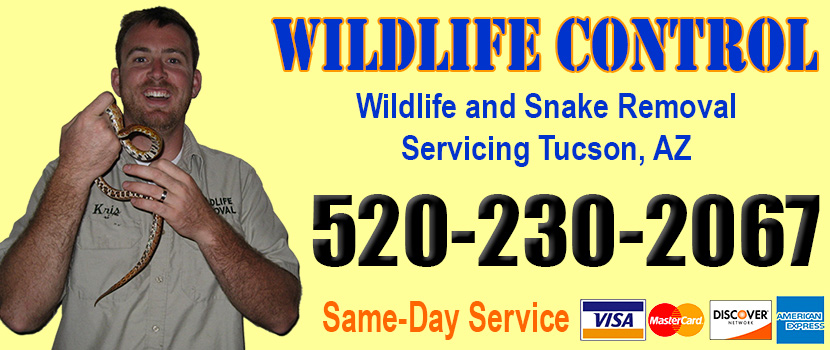
Welcome to tucsonsnakes.com! I am David, a snake enthusiast living in Tucson, AZ. Many people don't know that Tucson is in fact full of snakes! You just need to know where to find them - they can often be shy and elusive. Some Arizona snake species are more common outside of the city limits, in different parts of Pima County AZ, but many types of snakes are indeed common in the more urban parts of Tucson. This guide is meant to help educate you about the beautiful snakes of Tucson, and to help you identify the most common snakes of Tucson, as well as the venomous snakes of Tucson that you should learn to recognize and avoid. If you want more detail, click here for my complete list of ALL snake species in Tucson. Remember the following:
- Most snakes of Tucson are harmless and don't want to encounter you
- Venomous snakes exist but are uncommon in Tucson, Arizona
- Snakes eat rats and mice and are a valuable part of the Arizona ecosystem
- Never kill a snake - if you leave a snake alone, it will leave you alone.
Common Snake Species in Tucson
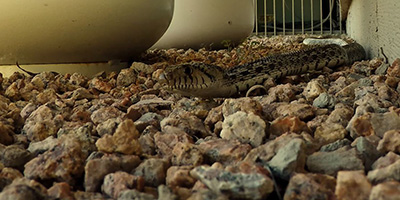 Sonoran Gopher Snake:
Sonoran gopher snakes are typically yellow or brown in color and usually have either a dark brown or black pattern ending in stripes near their tales. When these snakes are threatened they rattle their tails and hiss, though they don’t normally attack unless provoked. These snakes can grow up to 5 feet and are commonly mistaken for rattlesnakes.
Sonoran Gopher Snake:
Sonoran gopher snakes are typically yellow or brown in color and usually have either a dark brown or black pattern ending in stripes near their tales. When these snakes are threatened they rattle their tails and hiss, though they don’t normally attack unless provoked. These snakes can grow up to 5 feet and are commonly mistaken for rattlesnakes.
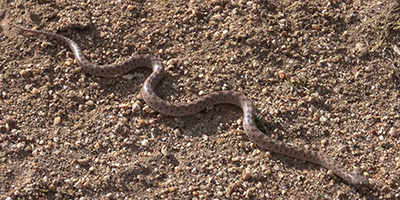 Night Snake:
The night snake is also often mistaken for a rattlesnake, this is because of the pupils they have and the fact that they coil around when resting, not to mention the patterns they have are similar to rattlesnakes. These snakes are also commonly found in urban areas such as bathrooms and garages. Aside from urban areas, these snakes can also be found in areas such as grasslands, deserts, bushes, and woodlands. These types of snakes are also known to make use of the burrows of other mammal animals as their home. These snakes are harmless however and do not bite.
Night Snake:
The night snake is also often mistaken for a rattlesnake, this is because of the pupils they have and the fact that they coil around when resting, not to mention the patterns they have are similar to rattlesnakes. These snakes are also commonly found in urban areas such as bathrooms and garages. Aside from urban areas, these snakes can also be found in areas such as grasslands, deserts, bushes, and woodlands. These types of snakes are also known to make use of the burrows of other mammal animals as their home. These snakes are harmless however and do not bite.
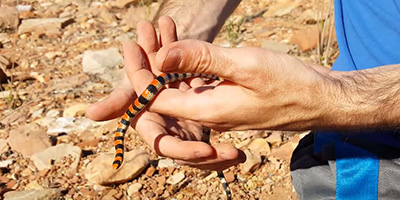 Ground snake:
Ground snakes vary in both color and pattern. They can either be red, striped, tan and a multitude of combinations. These snakes can be found in rocky areas, areas with clay, and areas with a lot of dry sand. They like to spend most of their time underground and can sometimes be found under rocks after some heavy rain. Thankfully, these snakes are actually harmless and don’t bite. In fact, these snakes may actually be good to have in one’s backyard.
Ground snake:
Ground snakes vary in both color and pattern. They can either be red, striped, tan and a multitude of combinations. These snakes can be found in rocky areas, areas with clay, and areas with a lot of dry sand. They like to spend most of their time underground and can sometimes be found under rocks after some heavy rain. Thankfully, these snakes are actually harmless and don’t bite. In fact, these snakes may actually be good to have in one’s backyard.
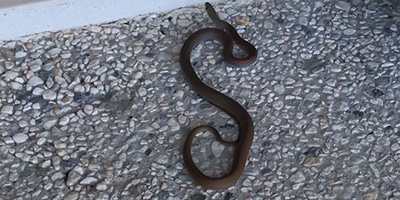 Whip snake:
Whip snakes are usually gray in color which eventually fades to brown. They also have stripes on their sides that go down to their bellies. These snakes are usually found in grassy, woody, rocky areas. They can also be located in areas with open water streams. They also like to stay in rock piles or the burrows of other small mammal animals. These snakes are fast and thin and are often mistaken for coachwhips. These snakes can grow up to 4 feet.
Whip snake:
Whip snakes are usually gray in color which eventually fades to brown. They also have stripes on their sides that go down to their bellies. These snakes are usually found in grassy, woody, rocky areas. They can also be located in areas with open water streams. They also like to stay in rock piles or the burrows of other small mammal animals. These snakes are fast and thin and are often mistaken for coachwhips. These snakes can grow up to 4 feet.
Venomous Snake Species in Tucson
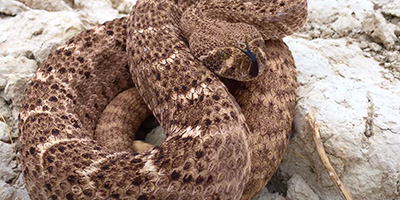 Western Diamondback Rattlesnake:
This type of diamondback rattlesnake is usually tan, brown, or grey in color. It also has a diamond-shaped pattern on its back and is commonly speckled with spots. These are also the most common rattlesnakes in the area. These snakes can be found in flat coastal areas but also can be located in high areas such as canyons and hillsides. They can also be found in deserts, grasslands, and pine-oak forests. These snakes can grow up to 4 feet.
Western Diamondback Rattlesnake:
This type of diamondback rattlesnake is usually tan, brown, or grey in color. It also has a diamond-shaped pattern on its back and is commonly speckled with spots. These are also the most common rattlesnakes in the area. These snakes can be found in flat coastal areas but also can be located in high areas such as canyons and hillsides. They can also be found in deserts, grasslands, and pine-oak forests. These snakes can grow up to 4 feet.
 Mojave Rattlesnake:
Mojave rattlesnakes are usually brown or green in color. They also have diamond patterns on their backs, but unlike the previous diamondback, these snakes don’t have speckles around their body. These snakes can be found in high deserts or low mountain slopes. They can be found inside bush-like areas where they can hide. They also have a tendency to hide behind cacti, forests, or in grassy areas. It likes open and arid areas, so it tends to avoid areas that are overcrowded with plants or are too full of rocks. These snakes can grow up to 3 feet.
Mojave Rattlesnake:
Mojave rattlesnakes are usually brown or green in color. They also have diamond patterns on their backs, but unlike the previous diamondback, these snakes don’t have speckles around their body. These snakes can be found in high deserts or low mountain slopes. They can be found inside bush-like areas where they can hide. They also have a tendency to hide behind cacti, forests, or in grassy areas. It likes open and arid areas, so it tends to avoid areas that are overcrowded with plants or are too full of rocks. These snakes can grow up to 3 feet.
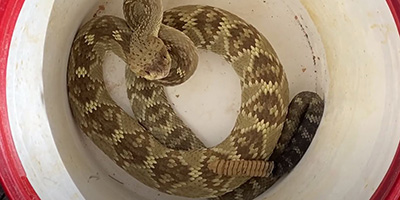 Black Tailed Rattlesnake:
Black tailed rattlesnakes are usually green, brown, or yellow in color. These snakes also have a unique black tail, which is implied by their name. This separates this snake specifically due to it not having stripes and instead of having a black tail. These snakes like to be in grasslands, deserts, and rocky areas. They also like to reside in areas with high altitudes such as pine-oak forests. They like to stay in warm areas, and as such can be found in, though rarely, areas that are near lava.
Black Tailed Rattlesnake:
Black tailed rattlesnakes are usually green, brown, or yellow in color. These snakes also have a unique black tail, which is implied by their name. This separates this snake specifically due to it not having stripes and instead of having a black tail. These snakes like to be in grasslands, deserts, and rocky areas. They also like to reside in areas with high altitudes such as pine-oak forests. They like to stay in warm areas, and as such can be found in, though rarely, areas that are near lava.
If you're unsure, you can email me a photo of the snake at info@tucsonsnakes.com and I will email you back with the snake's species. If you found a snake skin, read my Found a Skin? page, and you can email me a photo of the skin, and I'll identify the snake for you. If you need professional Tucson snake removal help, click my Get Help page, or see the below website sponsor I found, who provides that service.
Understanding The Diamondback Snake: Appearance, Biology, Life Cycle, Habitat, Diet, Behavior
All About the Diamondback Snake
A massive snake, the diamondback snake is not something to take lightly. It can cause some real damage and is one of those snakes that you should stay away from at all costs. If you live in the southern United States, around Florida or the southern edges of the states that border it, this is something to watch out for in your life. That does not mean you will definitely see it, of course. You may never see it – but it is a threat nonetheless. With its venom and size, you will want to keep it out of your life. You do not want to put yourself in a dangerous situation.
Appearance
Growing up to 8 feet long and over 30 pounds, there is no denying the massive size of the diamondback snake. It is one of the largest snakes out there, certainly in the United States. While not all get to that size, they all get big. They are not the type of snake that you want to mess with, both because of size and venom. Alongside being big, the diamondback are a brownish color, with lighter underbellies, and dark diamond spots across its body. Since they are rattlers, they have a rattle at the end of their tail, too.
Life
Pregnant for about half a year, these types of snakes give birth to live babies. Like most snakes, the young are ready to care for themselves almost immediately.
Behavior
The diamondback is the type of snake to protect itself. If you are in its area, and it feels threatened by you, there is a risk of it attacking. It is not going to want to, but it can. With its poison, you will want to keep your distance.
Habitat
As it primarily lives in Florida, the diamondback prefers flat land, grass, marshes, and anything with plenty of cover. They can swim and climb, but they spend most of their time on the ground, so areas that facilitate that while keeping them safe are preferred.
Diet
Birds, rats, and rabbits, and other small animals it can find, are common meal sources for the diamondback. As a larger snake, it needs something bigger than a frog or mouse, and these mammals are just the trick for that. Diamondbacks are a venomous, large snake that can cause some damage – and will if you are not careful. Keep your distance and know when they are around for your own safety.
Remember, the term is not poisonous snakes of Tucson, it's venomous snakes of Tucson. Poison is generally something you eat, and venom is injected into you. That said, dangerous snakes are very rare in Tucson. The few venomous snakes of Pima County are rarely seen. But they are commonly misidentified, so learn about all the snake species of Tucson in order to correctly identify them. These snakes are usually also found in the surrounding towns of Tucson, Green Valley, Marana, Oro Valley, Sahuarita, Vail, Catalina Foothills, Ajo, South Tucson, Tanque Verde, Catalina, Arivaca, Casas Adobes, Flowing Wells, Picture Rocks, Avra Valley, Sells, Corona de Tucson, Three Points, Tucson Estates, Drexel Heights, Santa Rosa, Summit, Topawa, and the surrounding areas.
Read our article about:
What you should do if a snake bites you
tucsonsnakes.com domain and hosting costs made possible by the generous support of this sponsor:
